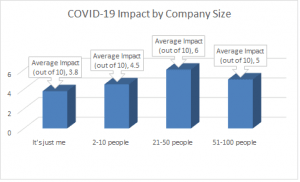
Despite this, its use can result in significant financial benefits by uncovering previously Suspense Account concealed cost patterns and enhancing operational efficiency. Despite its benefits, job costing can be resource-intensive, requiring meticulous record-keeping to ensure accuracy. It also involves complex allocation of overhead costs to different jobs, which can be challenging without robust systems in place.

FAQ 9: What are the limitations of the historical cost principle?

Accrual accounting is widely used by businesses, as it provides a more accurate representation of financial information. It allows for better decision-making, as it reflects the economic reality of a company’s operations, even if cash transactions have not yet taken place. By recognizing revenues and expenses in the period they occur, accrual accounting helps stakeholders assess the financial health and performance of an entity. These expenses lower the company’s reported profit, which can reduce tax liabilities while providing a clear picture of how assets contribute to operations. By tying depreciation and amortization to cost principle accounting definition historical cost, the income statement remains consistent and compliant with GAAP and IFRS, ensuring that financial performance is accurately represented over time.
What Is Cost Accounting? Definition, Concept, and Types
This principle is deeply embedded in accounting standards, providing a structured approach to valuing assets based on their original acquisition cost. The essence of the Cost Principle lies in its emphasis on the historical, verifiable cost of assets at the time of acquisition, contributing to the reliability and consistency of financial reporting. The application of the cost principle in asset valuation extends beyond mere bookkeeping; it plays a significant role in strategic decision-making and financial planning.
- When you’re starting to dive into accounting, you’ll come across an entire glossary of terms.
- It is advisable to record your assets as per fair market value rather than the actual cost that might fluctuate.
- Businesses can also make budgeting decisions based on historical purchases and long-term trends in price.
- As with any accounting principle, its application should be considered in the context of specific business circumstances and industry practices.
- However, to be thorough, it is important to state that assets are anything of value owned by a business.
- If a chair requires $50 in wood, $30 in fabric, and $40 in direct labor, the total direct cost for that chair would be $120.
Objectivity in Reporting
By combining the stability of historical cost with the flexibility of other valuation methods, businesses can present a clearer, more comprehensive picture of their financial health. A manufacturing company purchases a new industrial machine for $150,000 to enhance its production line. All these costs are necessary to prepare the machine for its intended use, so they are added to the initial purchase price. As a result, the machine’s historical cost recorded on the company’s balance sheet is $165,000. This total reflects the full investment required to make the asset ready for productive use. In the realm of accounting, the Cost Principle, also known as the Historical Cost Principle, stands as a fundamental guideline shaping the way assets are recorded and reported on financial statements.
- The historical cost principle and market value (or mark-to-market accounting) are two distinct methods for valuing assets, each with its own purpose and application.
- On the other hand, short-term assets aren’t in your possession long enough to significantly change value.
- Summarizing these costs can give greater clarity about the overall operational efficiency of the business.
- When a business records an asset at its original cost—the amount paid at the time of purchase, including costs like shipping or installation—it relies on concrete evidence such as receipts, invoices, or contracts.
- It’s possible that the maker has discontinued producing that asset, or that it’s got expensive.
Cost Concept in Accounting FAQs

Being able to keep all costs consistent over time, as well as house documents for verification, is key. As such, be sure to find good software that https://s21sdx.org/how-much-overtime-is-too-much-nyc-tax-accounting/ works for you and your accountant. We offer a free trial of our accounting software which will allow you to use the cost principle. Additionally, if this article was helpful to you, we’ve got more like it! Be sure to check out our resource hub for everything finance and business related. If an asset is inherited, it will act like a liquid asset, or an intangible asset.
- These principles are for cost determination and are not intended to identify the circumstances or dictate the extent of Federal and State or local participation in financing a particular contract.
- This transparency is crucial for maintaining investor confidence and meeting regulatory requirements, particularly in sectors where accurate asset valuation is essential for compliance and risk management.
- Appreciation is treated as a gain and the difference in value should be recorded as ‘revaluation surplus’.
- The cost principle is considered one of the fundamental guidelines for bookkeeping and accounting; however, it is fairly controversial.
- An example of costing in cost accounting is determining the total cost of manufacturing a product, such as a chair.
- These assets cannot be represented using the cost principle because of this.
- By applying standardized methods across the board, businesses can ensure uniformity in their cost measurements, improving the quality of data-driven decision-making.
